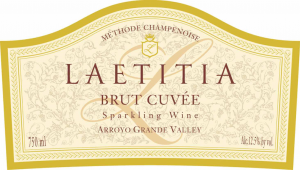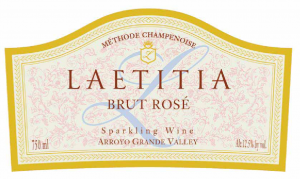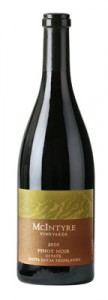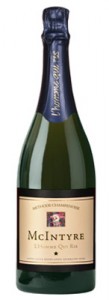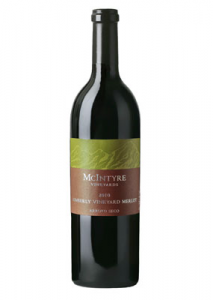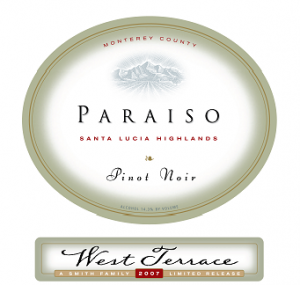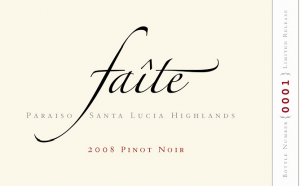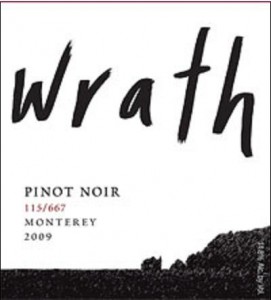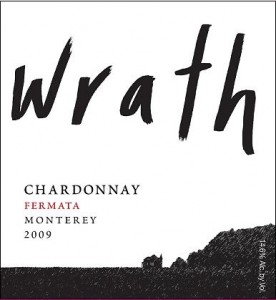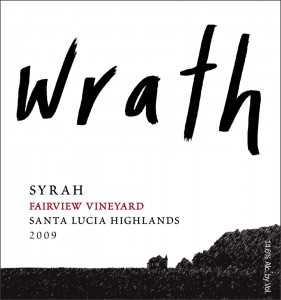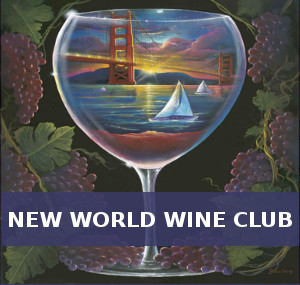The notion of sustainability is becoming ever more popular, and for the wine industry in particular, the philosophy has seen a dramatic growth over the past several years. Assessing sustainability, however, isn’t as cut and dry compared to other methods of farming. As an example, for a grower to claim his grapes are organic, he simply must not use pesticides, fungicides, or other chemical sprays. To claim sustainability is more complex since the concept involves an entire operation, rather than the vineyards exclusively.
Out in California, the Central Coast Vineyard Team is doing their part to make it easier. They have developed a set of standards to help define what steps producers must take to achieve sustainability, and they have organized a process for wineries to be certified as meeting those standards. Wines that are certified can proudly display the Sustainability-in-Practice or SIP Seal on their labels.
To find out more about the Vineyard Team and the SIP Certification, we talked to the program’s Director, Kris Beal.
Here’s Part 1 of our interview with her as well as our tasting panel’s reviews of SIP Certified wines from Monterey County & the Arroyo Grande Valley.
Fist off, what is the Central Coast Vineyard Team and what is its general mission?
The Central Coast Vineyard Team is a non-profit grower group established in 1994 with a mission to educate and guide growers towards more sustainable vineyard practices. Since 1998, the team has been about grower education, research, and demonstration.
The Central Coast Vineyard Team started offering the SIP Certification in 2008. What factored into the decision to create it?
Starting in 1996, we developed the Positive Points System, which was the first self assessment we had for growers who wanted to look at their integrated whole farm practices. We also had other programs revolving around research and education before we even thought about certification. Then in 2004, we thought that maybe certification was a good idea. It seemed to be part of the natural evolution of what we’d been doing. We started writing the standards, and they took four years to finish including the peer review [by other technical experts outside of our organization].
What sets the SIP program apart from other certifications that wineries can have?
We feel very strongly about a sustainable certification because it looks at the entire farm [rather than at a few narrow aspects]. That means that it addresses the environmental components of the farm as well as the social components. We’re really looking at protecting both the natural and human resources. It means we look at soil, energy, water, and habitat, plus how the company is treating its employees.
We worked very hard at developing strict standards that are auditable. There’s a high bar we set for growers to be eligible for certification with specific things they can and cannot do. So we believe our program is very rigorous and that means not everyone that wants to be certified will qualify to be certified.
As a whole, the wine industry is probably one of the greenest with many producers engaging in “low impact” or “socially responsible” methods of operation. Beside the notion of people simply wanting to do “the right thing” what additional value do wineries get out of the program?
The thing about our program is that we have some small producers along with some big producers. And they all have different business models and different customers, yet they are finding a great deal of value in [our program] in one way or another. The value varies for each participant – product differentiation, verifiable sustainability claims for gatekeepers, an additional layer of their “story” for their customers.
Everyone in the program is coming at it a bit differently, but clearly they are finding value in it. The fact is that since we started in 2008, out of all the companies involved, only one has dropped out of the program, and in that case, it was due to a staffing change where they no longer had the capacity to stay up on everything. The rest of the people have all renewed, grown more acres and renewed, so that alone says there is value in the program.
Check back next week to read the second installment of Kris’s interview along with reviews for SIP Certified wines from the Edna Valley.
SIP Certified Wines Reviews: Monterey County & Arroyo Grande Valley
Winery: Laetitia Vineyards
Grape(s): Chardonnay and Pinot Blanc (Sparkling)
Region: Arroyo Grande Valley
Special Designation: Brut Cuvee
Year: (non-vintage)
Price: 20-25
Review
Aromas of apple, dried apricot, and warm dough flow into flavors of crisp apple and cherry blossoms. Crisp and fairly lively, with moderate fruit character, it’s light and easy to drink.
Rating: 88
Winery: Laetitia Vineyards
Grape(s): Pinot Noir & Chardonnay (Sparkling)
Region: Arroyo Grande Valley
Special Designation: Brut Rose
Year: 2007
Price: 20-25
Review
Notes of cherries, strawberries, sour dough, toasted almonds, and floral hints greet the senses. Light and fairly smooth, with a bit of astringency at the finish, it’s a wine that’s best with food. Try chicken or Turkey with a Mango Salsa.
Rating: 87
Winery: McIntyre Vineyards
Grape(s): Pinot Noir
Region: Monterey County
Special Designation: Santa Lucia Highlands
Year: 2010
Price: 35-40
Review:
Aromas of red berries meld with suggestions of earth on the nose. Notes of cherry and strawberry emerge on the palate along with hints of dusty earth, truffles, and minerals. A fairly light, welcoming red, fans of red fruit with a slight earthy accent will enjoy this bottle.
Rating: 90
Winery: McIntyre Vineyards
Grape(s): Pinot Noir & Chardonnay
Region: Monterey County
Special Designation: L’Homme Qui Ris
Year: non-vintage
Price: 25-30
Review:
A light, citrusy bouquet accented by a bit of toast greets the senses. Dry and fairly bright, it’s a nice, approachable sparkling wine.
Rating: 90
Winery: McIntyre Vineyards
Grape(s): Merlot
Region: Monterey County
Special Designation: Arroyo Seco
Year: 2010
Price: 15-20
Review:
Blackberry preserves, currants, and black cherry aromas greet the senses. The palate delivers notes of bramble fruit and cherries with accents of toasty oak, dried herbs, and light spice. Fairly easy-going but with a bit more body and dryness that many Merlots, fans of dark fruit and moderate tannins will enjoy this wine.
Rating: 89
Grape(s): Pinot Noir
Region: Monterey County
Special Designation: West Terrace
Year: 2008
Price: 35-40
Review
Aromatics of cherries and plums meld with suggestions of earth, cola, and game on the nose. A sip reveals flavors of cherry, strawberry, and plum come together with notes of sweet spice, earth, and vanilla. A lush, more elegant Pinot, that still offers some very nice depth, fans of lighter, complex reds should give this bottle a try.
Rating: 89
Winery: Paraiso Vineyards
Grape(s): Pinot Noir
Region: Monterey County
Special Designation: Faite
Year: 2008
Price: 60-65
Review
Nuances of cherry and currants meld with suggestions of spice, earth, and game on the nose. Cherry and plum flavors come together with notes of bacon, white pepper, and minerals on the palate. A fairly light, red with softer acidity, if you prefer moderate fruit with a light spice this is a Pinot to try.
Rating: 90
Winery: Wrath
Grape(s): Pinot Noir
Region: Monterey County
Special Designation: 115/667
Year: 2009
Price: 30-35
Review
Aromatics of cherries, plums, and strawberries meld with suggestions of dark chocolate and sweet spice. A sip delivers flavors of cherry and strawberry accented by notes of sweet spice and herbs. A smooth, easy-going Pinot, fans of light, layered reds will enjoy this wine.
Rating: 90
Winery: Wrath
Grape(s): Chardonnay
Region: Monterey County
Special Designation: Fermata
Year: 2009
Price: 30-35
Review
Notes of tropical fruit, pear, and apricot meld with suggestions of lush vanilla and all-spice. The palate delivers flavors of pineapple and apricot along with nuances of lemon custard and sweet spice. A rich, round white, with plenty of fruit and a mellow acidity, fans of classic California Chardonnay will enjoy this bottle.
Rating: 92
Winery: Wrath
Grape(s): Syrah
Region: Monterey County
Special Designation: Fairview Vineyard
Year: 2009
Price: 35-40
Review
A bouquet of dark fruit, black pepper, fennel, and smoked ham greets the senses. Flavors of bramble fruit and game combine with notes of licorice and spice on the palate. A red with plush tannins and nice layers, fans of cool climate Syrah will enjoy this bottle.
Rating: 89


